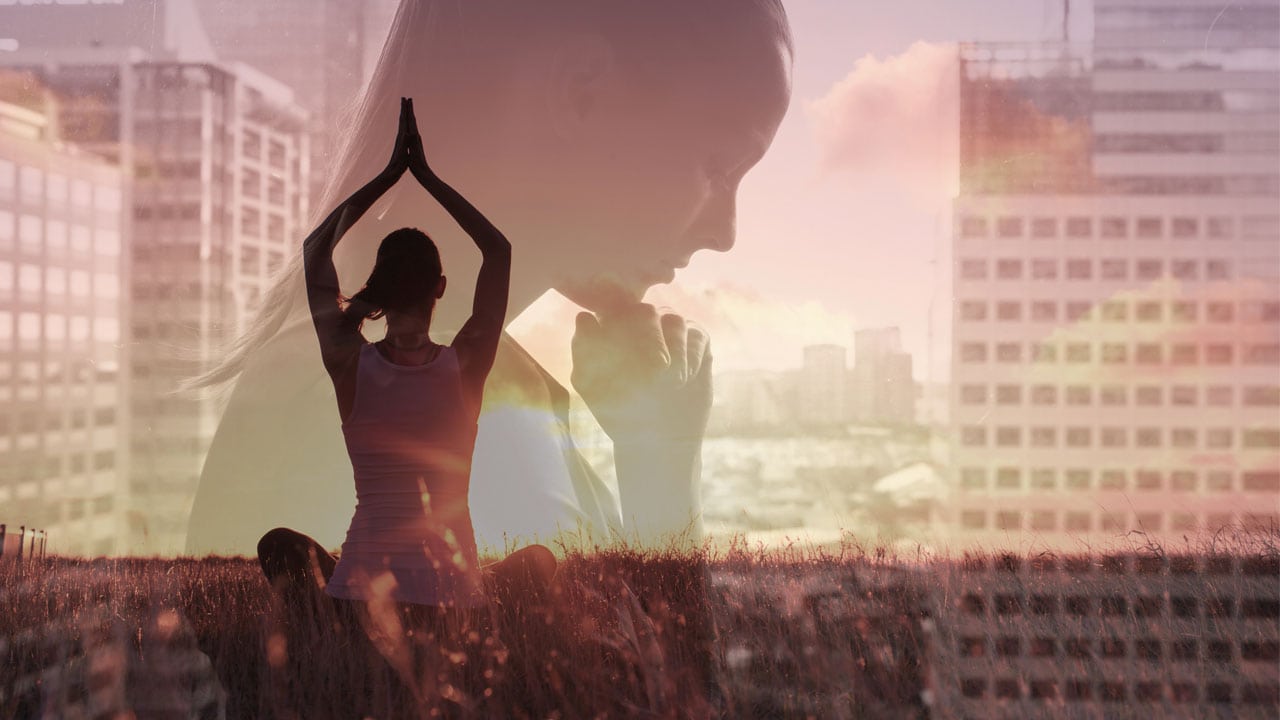
Seeking embodiment
Bringing mind and body to unity and balance. By Lauren Bloxham
We live in a world which is dominated by online interaction. Our work and lives have become more remote and virtual than ever in recent years, and whilst this has many advantages, it also comes with its disadvantages.
Whilst we’re plugged in and connected to the virtual world, whether through work, socialising or for distraction, we can become unplugged and disconnected from our bodies and the vital feedback of the moment. Our bodies become passive, and secondary to our often-remote thinking minds as we see and hear information, which can flood to us in overwhelming quick succession. Not only are our bodies passive, but our body language is not required. Considering our physicality becomes an afterthought (or even hindrance) in the process of preparing for and engaging in online interactions.
As with all things in life, balance is key to our sense of wellbeing, so when our lives become dominated by the online world, we crave what’s missing. Often, we are already so disconnected from what we’re missing that we can’t put our finger on it at all. What that brings is a sense of unease, a subconscious dissatisfaction that ‘knows’ we’ve done what’s required of us but ‘feels’ unfulfilled. So how do we re-establish the lost connection and bring mind and body back to balance?
Yoga is about unifying the human experience. Internally within ourselves, and externally as we relate to the world around us. Many of us come to yoga seeking greater balance in life, but without knowing how to unravel the habits and patterns of being that have brought us to imbalance in the first place. Often what we perceive our ‘yoga’ practice to be, is merely an extension of our lives as we know them; the accumulation of physical, mental and emotional habits which constitute our make-up. It’s possible to bring just as much stress into the yoga class as there is in the office or home. This manifests as a physical movement practice with the dominating noise of our over exercised thinking minds which ruminate on the day we’ve had, what’s been said, or what we need to do next. Or it could be the inner dialogue of: ‘I feel self-conscious,’ or ‘the person next to me is better at this than me’, which are examples of the disconnect between body and mind. The mind becomes remote, which can feel as though the ‘yoga’ isn’t working.
Savasana can be a good example of the disconnection we bring to class.
How many times have you laid in savasana and immediately started thinking about the time, or what you’re going to have for dinner? Perhaps it becomes the moment when you suddenly remember you haven’t put the rubbish out or that you’ve left your laptop at work? You may have even left the class (or know someone who has) before savasana. Think about how difficult or unimportant it must feel or has felt to exclude savasana from the practice?
Many of us miss the point of savasana and of our wider practice, or struggle to find our way towards the unifying of mind and body despite showing up every week, simply because the mind is in overdrive, overworked, over stimulated, and unplugged from the physical experience of being. The mind becomes as remote and virtual from the body as the online world is from our physical world.
In seeking embodiment, we are looking to establish unity and balance between mind and body. This is the essence of yoga. Think about the last time you became engrossed in a physical activity that also offered mental respite, the kind of activity where mind and body become one unified experience, where time is lost and nothing else other than what’s being experienced in the moment occurs to us. Gardening may be an example, whether it’s planting a window box or growing vegetables at an allotment, it’s a process by which mind, and body can find unity and the wandering or unsettled mind is silenced. Another example may be in walking with purpose. Think about taking an unfamiliar walking route. The process of orientating ourselves, looking for landmarks and enjoying new scenery before arriving at the destination. It’s the connection that enables us to end our days feeling that we’ve participated fully, that every cell of our being was involved in the process. This is the experience of embodiment, and this is the point of our yoga practice.
Establishing the reconnection of mind and body is a practice and a discipline, which requires time and effort. When the balance of mental stimulation outweighs physical activity, it becomes an ongoing challenge to unplug from that mental distraction and reconnect to ourselves. We may even go so far as seeking mental stimulation as a habit: think about how often you might check the phone during the day, or how often the mind goes to a distracted thought train which is unrelated to the activity being undertaken. So, coming to our yoga practice, however that looks (gardening and purposeful walking or running and crafting could all be considered experiences of ‘yoga’), requires us to remember that in seeking embodiment and deeper connection we are establishing new habits of being. Changing habits is challenging and requires ongoing practice, patience, and compassion to become well established. But slowly and with commitment we begin to notice how our lives have changed. We move away from fragmentation and harness our wandering minds towards embodiment and the feeling of true presence within ourselves. We begin to experience a greater sense of balance and fulfilment in our day to day lives, as well as our yoga class, and gradually the connection between mind and body is strengthened. This is when we know the yoga is working!
Lauren Bloxham is a registered yoga teacher with the British Wheel of Yoga. Her classes encourage exploring intuitive movement through slow flowing Hatha yoga asana. Visit: blackdogliving.com




